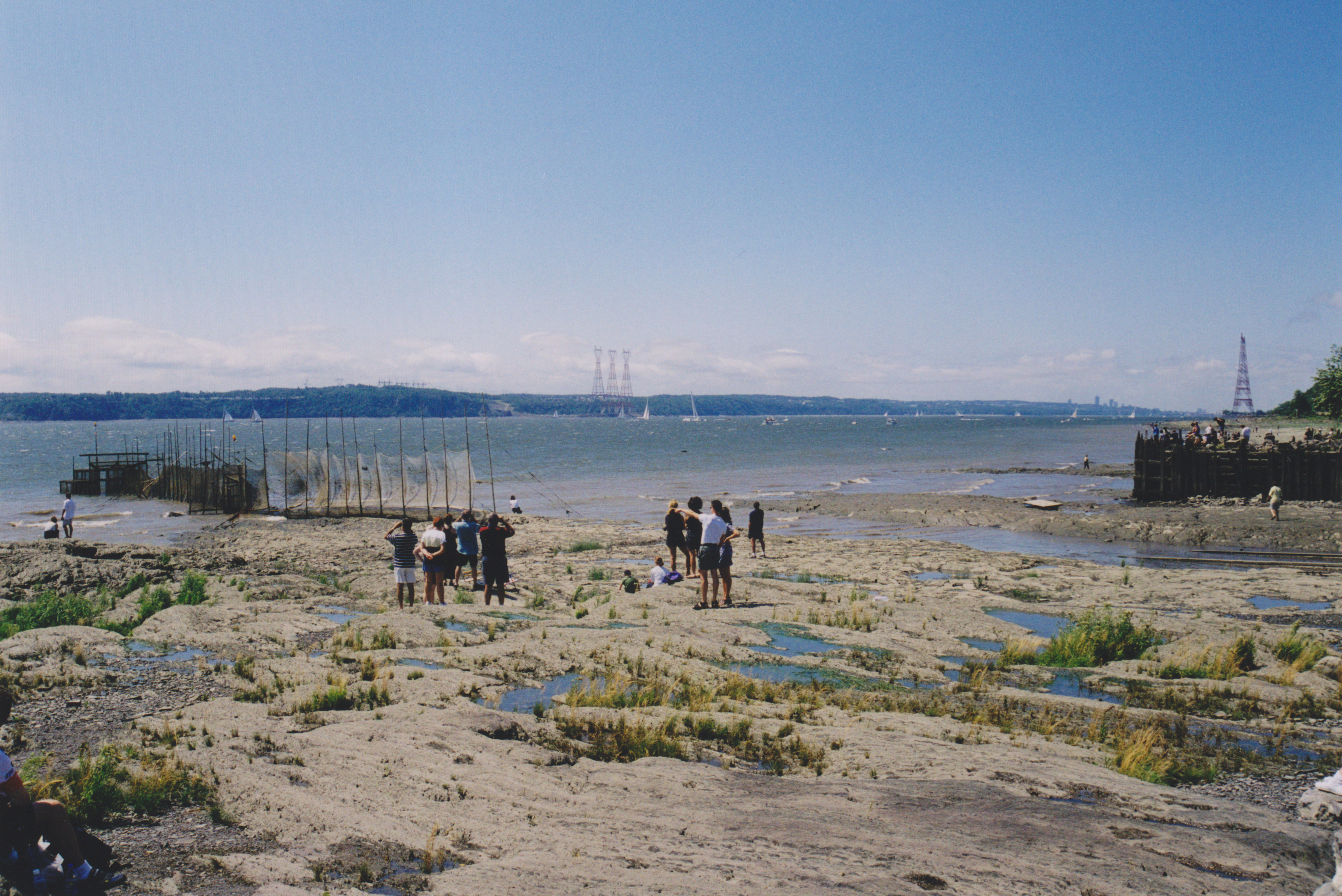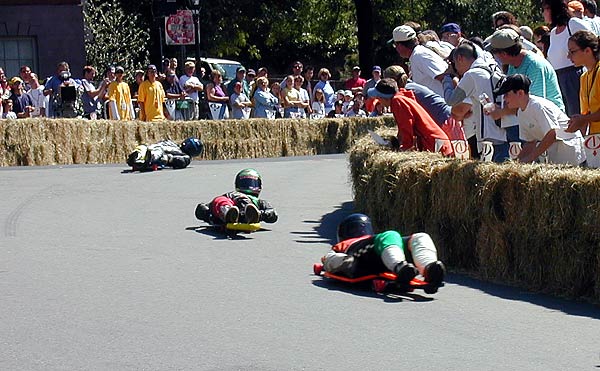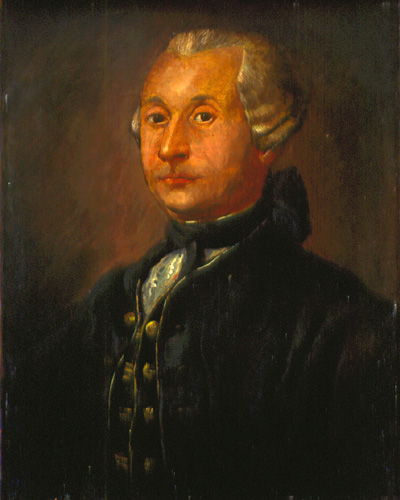|
Les Éboulements
Les Éboulements () is a municipality (Quebec), municipality in the Capitale-Nationale region of Quebec, Canada. Its population centres include Les Éboulements (located along Quebec Route 362, Route 362 on the plateau overlooking the Saint Lawrence River), Éboulements-Est (at the feet of Mount Éboulements), Cap-aux-Oies, Sainte-Marie-de-Charlevoix, and Saint-Joseph-de-la-Rive, Quebec, Saint-Joseph-de-la-Rive (on the shores of the Saint Lawrence facing L'Isle-aux-Coudres, Quebec, Saint-Bernard-sur-Mer). Saint-Joseph-de-la-Rive, formerly known as Les Éboulements-en-Bas and Quai-des-Éboulements, is the departure point for ferries to L'Isle-aux-Coudres, Quebec, L'Isle-aux-Coudres. The municipality is member of the Association of Most Beautiful Villages of Quebec due to its country heritage and to the beautiful architecture and character of its houses. History In February 1663, a 1663 Charlevoix earthquake, strong earthquake shook the Charlevoix region and triggered a large land ... [...More Info...] [...Related Items...] OR: [Wikipedia] [Google] [Baidu] |
Municipality (Quebec)
The following is a list of the types of Local government in Quebec, local and Wiktionary:supralocal, supralocal territorial units in Quebec, Canada, including those used solely for statistical purposes, as defined by the Ministry of Municipal Affairs, Regions and Land Occupancy (Quebec), Ministry of Municipal Affairs, Regions and Land Occupancy and compiled by the Institut de la statistique du Québec Not included are the urban agglomerations in Quebec, which, although they group together multiple municipalities, exercise only what are ordinarily local municipal powers. A list of local municipal units in Quebec by regional county municipality can be found at List of municipalities in Quebec. Local municipalities All municipalities (except cities), whether township, village, parish, or unspecified ones, are functionally and legally identical. The only difference is that the designation might serve to disambiguate between otherwise identically named municipalities, often neighbo ... [...More Info...] [...Related Items...] OR: [Wikipedia] [Google] [Baidu] |
Saint Lawrence River
The St. Lawrence River (, ) is a large international river in the middle latitudes of North America connecting the Great Lakes to the North Atlantic Ocean. Its waters flow in a northeasterly direction from Lake Ontario to the Gulf of St. Lawrence, traversing Ontario and Quebec in Canada and New York (state), New York in the United States. A section of the river demarcates the Canada–United States border, Canada–U.S. border. As the primary Discharge (hydrology), drainage outflow of the Great Lakes Basin, the St. Lawrence has the List of rivers by discharge, second-highest discharge of any river in North America (after the Mississippi River) and the 16th-highest in the world. The estuary of St. Lawrence, estuary of the St. Lawrence is often cited by scientists as the largest in the world. Significant natural landmarks of the river and estuary include the 1,864 river islands of the Thousand Islands, the endangered whales of Saguenay–St. Lawrence Marine Park, and the limestone ... [...More Info...] [...Related Items...] OR: [Wikipedia] [Google] [Baidu] |
Charlevoix Impact Structure
The Charlevoix impact structure is a large eroded meteorite impact structure in the Charlevoix region of Quebec, Canada. Only part of the impact structure is exposed at the surface, the rest lying beneath the Saint Lawrence River. Description The original impact structure is estimated to have been in diameter and the age of the impact is estimated to be 450 ± 20 million years (Ordovician to Silurian age).Schmieder, M., Shaulis, B.J., Lapen, T.J., Buchner, E. and Kring, D.A., 2019. ''In situ U–Pb analysis of shocked zircon from the Charlevoix impact structure, Québec, Canada.'' ''Meteoritics & Planetary Science.'' 54(8) pp. 1808-1827. The projectile was probably a stony asteroid, at least in diameter, and weighing an estimated . The Mont des Éboulements, situated in the exact centre of the impact structure, is interpreted as the central uplift, a consequence of elastic rebound.Interpretation Centre, Parc national des Grands-Jardins, Charlevoix The impact structure is clas ... [...More Info...] [...Related Items...] OR: [Wikipedia] [Google] [Baidu] |
Les Éboulements à L'aube L'hiver
LES or Les may refer to: People * Les (given name) * Les (surname) * L.E.S. (producer), hip hop producer Space flight * Launch Entry Suit, worn by Space Shuttle crews * Launch escape system, for spacecraft emergencies * Lincoln Experimental Satellite series, 1960s and 1970s Biology and medicine * Lazy eye syndrome, or amblyopia, a disorder in the human optic nerve * The Liverpool epidemic strain of ''Pseudomonas aeruginosa'' * Lower esophageal sphincter * Lupus erythematosus systemicus Places * The Lower East Side neighborhood of Manhattan, New York City * Les, Catalonia, a municipality in Spain * Leş, a village in Nojorid Commune, Bihor County, Romania * ''Les'', the Hungarian name for Leșu Commune, Bistriţa-Năsăud County, Romania * Les, a village in Tejakula district, Buleleng regency, Bali, Indonesia * Lesotho, IOC and UNDP country code * Lès, a word featuring in many French placenames Transport * Leigh-on-Sea railway station, National Rail station code * Leyto ... [...More Info...] [...Related Items...] OR: [Wikipedia] [Google] [Baidu] |
Street Luge
Street luge is an extreme gravity-powered activity that involves riding a street luge board (sometimes referred to as a sled) down a paved road or course. Street luge is also known as land luge or road luge. Like skateboarding, street luge is often done for sport and for recreation. Other than the supine riding position and very high speeds (70–102 mph / 112–164 km/h), street luge has little relation to its winter namesake (luge). History Street luge was born in Southern California as downhill skateboarders found they could reach faster speeds by lying down on their skateboards. This early form of the sport is now referred to as "laydown skateboarding". In 1975, the first professional race was held at Signal Hill, California, and hosted by the U.S. Skateboard Association. The race winner was based on top speed. The boards used in this race varied from basic skateboards to complex skate cars in which the rider was completely enclosed by plastic or fiberglass. The ... [...More Info...] [...Related Items...] OR: [Wikipedia] [Google] [Baidu] |
1997 Les Éboulements Bus Accident
The 1997 Les Éboulements bus accident, also known as the St. Joseph Bus Accident, occurred on Thanksgiving Day, October 13, 1997, in Les Éboulements (St-Joseph-de-la-Rive), Quebec, Canada. 44 died as a result of the crash, making it the deadliest traffic collision in Canadian history. A similar crash had occurred in 1974 at the very same spot and had resulted in 14 deaths. Crash The bus, carrying members of a Golden Age Club on an overnight leaf peeping trip, had travelled on Quebec Highways 138 and 362 from Saint-Bernard headed for L'Île-aux-Coudres. It was travelling down Côte des Éboulements, which had a steep hill with a sharp right turn at the base. The time was 1:45 pm, and the roads were dry and clear. The driver, André Desruisseaux, was unable to slow the bus to negotiate the curve, and the bus collided with the guardrail, smashed through it and plunged over 10 metres into a ravine. It landed, slid on its right side and came to rest beside an elevated railway li ... [...More Info...] [...Related Items...] OR: [Wikipedia] [Google] [Baidu] |
Pierre De Sales Laterrière
Pierre de Sales Laterrière (; 1743 or 1747 – 14 June 1815), was an adventurer who left France in 1766. He was inspector and director of the ironworking Forges du Saint-Maurice and seigneur of the municipality Les Éboulements in New France (Canada). Sales Laterrière was born near Albi, (perhaps) the son of a French count, Jean Pierre De Sales. He was employed as a clerk by Alexandre Dumas at Quebec City. In 1769, he left Quebec City to practice medicine with a doctor at Montmagny. Though he said he had studied medicine in Paris, Laterrière probably began practicing medicine with no formal medical training, not uncommon at that time. In 1771, he was employed as an agent for the Saint-Maurice ironworks at Quebec City. In 1775, Laterrière was hired as inspector for the ironworks and he moved to Trois-Rivières. In 1776, the director of the ironworks, Christophe Pélissier (businessman), was arrested by the British for supplying weapons and ammunition to the American ar ... [...More Info...] [...Related Items...] OR: [Wikipedia] [Google] [Baidu] |
League (unit)
A league is a unit of length. It was common in Europe and Latin America, but due to its highly inconsistent definition, it is no longer an official unit in any nation. Derived from an ancient Celtic unit and adopted by the Romans as the , the league became a common unit of measurement throughout western Europe. Since the Middle Ages, many values have been specified in several countries, ranging from 2.2 km (1.4 mi) to 7.9 km (4.9 mi). It may have originally represented, roughly, the distance a Preferred walking speed, person could walk in an hour. Definitions Ancient Rome The league was used in Ancient Rome, defined as 1½ mile#Roman, Roman miles (7,500 Foot (unit)#Historical origin, Roman feet, modern 2.2 km or 1.4 miles). The origin is the ''(also:'' '')'', the league of Gaul. Argentina The Argentine league () is or 6,666 : 1 is . England On land, the league is most commonly defined as three miles (4.83 km), although the length of a mile could vary ... [...More Info...] [...Related Items...] OR: [Wikipedia] [Google] [Baidu] |
Jacques De Meulles
Jacques de Meulles, seigneur of La Source (died 1703), was intendant (1682–86) and interim governor general of New France. He was the son of Pierre de Meulles, king's councillor, treasurer-general of war supplies; d. 1703. As chief administrator of the Colony, he issued playing cards as legal tender from 1684 onwards owing to a shortage of coins. The funds were used, in part, to pay soldiers who arrived in New France since 1665 to protect and built the colony.Charlotte Gray 'The Museum Called Canada: 25 Rooms of Wonder' Random House, 2004 He frequently came into conflict with Louis de Buade de Frontenac, the governor of New France, including a dispute over the siting of Quebec (Meulles wanted to rebuild it further into the lower-town). After his colonial career, he retired to Orléans Orléans (, [...More Info...] [...Related Items...] OR: [Wikipedia] [Google] [Baidu] |
Antoine Lefèbvre De La Barre
Joseph-Antoine le Fèbvre, sieur de La Barre (or Antoine Lefebvre, Antoine Lefèvre; 1622–1688) was a French lawyer and administrator best known for his disastrous three years as governor of the colony of New France (Quebec). As a young man he served in the administration in France. He then became governor of Cayenne (French Guiana) in 1664 after it was recovered from the Dutch. After handing Cayenne over to his brother, he served briefly as lieutenant-general of the French West Indies colonies, then for many years was a naval captain. In two engagements he was accused of cowardice, but in others he served with distinction. At the age of 60 he was appointed Governor of New France, holding office from 1682 to 1685. He spent much of his energy in trading ventures, using his position as governor to attack his great rival René-Robert Cavelier de La Salle. He began a war with the Iroquois, the main power in the region, and led a poorly equipped expedition against them that ran into ... [...More Info...] [...Related Items...] OR: [Wikipedia] [Google] [Baidu] |
Landslide
Landslides, also known as landslips, rockslips or rockslides, are several forms of mass wasting that may include a wide range of ground movements, such as rockfalls, mudflows, shallow or deep-seated slope failures and debris flows. Landslides occur in a variety of environments, characterized by either steep or gentle slope gradients, from mountain ranges to coastal cliffs or even underwater, in which case they are called submarine landslides. Gravity is the primary driving force for a landslide to occur, but there are other factors affecting slope stability that produce specific conditions that make a slope prone to failure. In many cases, the landslide is triggered by a specific event (such as heavy rainfall, an earthquake, a slope cut to build a road, and many others), although this is not always identifiable. Landslides are frequently made worse by human development (such as urban sprawl) and resource exploitation (such as mining and deforestation). Land degradation freque ... [...More Info...] [...Related Items...] OR: [Wikipedia] [Google] [Baidu] |
1663 Charlevoix Earthquake
The 1663 Charlevoix earthquake occurred on February 5 in New France (now the Canadian province of Quebec), and was assessed to have a moment magnitude of between 7.3 and 7.9. The earthquake occurred at 5:30 p.m. local time and was estimated to have a maximum perceived intensity of X (''Extreme'') on the Mercalli intensity scale. The main shock epicentre is suggested to have occurred along the Saint Lawrence River, between the mouth of the Malbaie River on the north and the mouth of the Ouelle River on the south. A large portion of eastern North America felt the effects. Landslides and underwater sediment slumps were a primary characteristic of the event with much of the destruction occurring near the epicentral region of the St. Lawrence estuary and also in the area of the Saguenay Graben. The event occurred during the early European settlement of North America and some of the best-recorded first-hand accounts were from Catholic missionaries that were working in the area ... [...More Info...] [...Related Items...] OR: [Wikipedia] [Google] [Baidu] |





